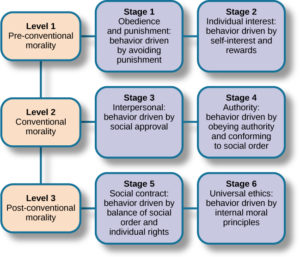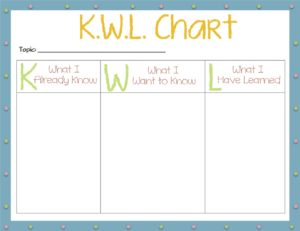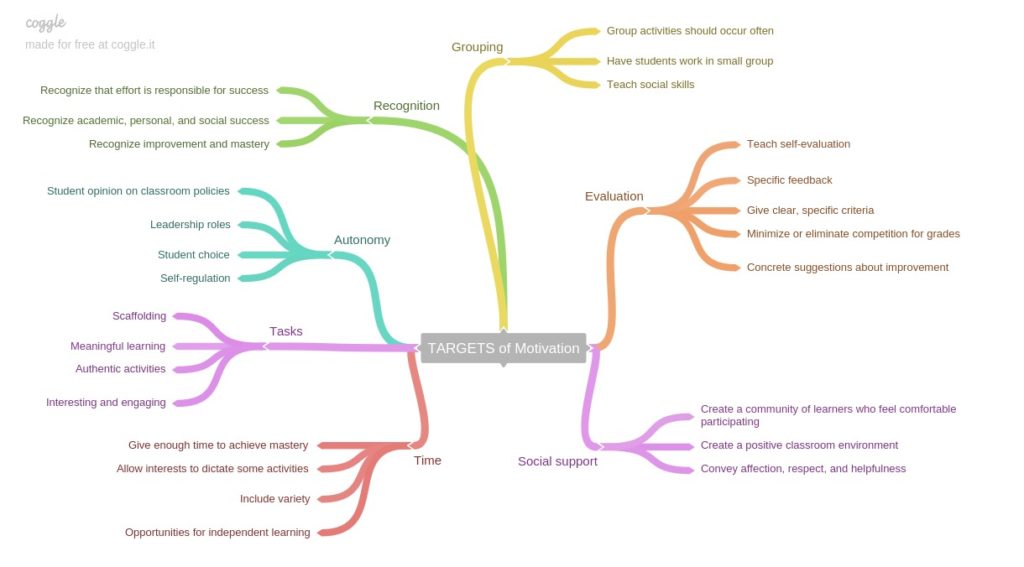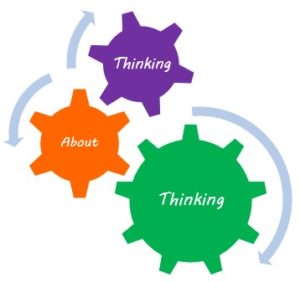Introduction
I believe all children have the right and the ability to learn when given the opportunity and high expectations. It is my job to help them figure out how to learn. It is the job of the standards to tell me what they learn. There are many different theories regarding learning styles, but the big takeaway for all of that is to know that each individual you meet is different and learns in different ways. That is also a foundation of special education, universal design for learning, and differentiating instruction. I plan to provide students with multiple means of expression, representation, and engagement in every situation. Special education specifically comes into play when a student requires specially designed instruction where either the content, the method, or the delivery of instruction is changed. There’s a lot to be taught at school outside the state standards including cooperation, collaboration, behavior, morals, social skills, and daily living skills. Many of these things are learned naturally, but there are many possibilities to be more explicit. A focus on working in groups and a classroom economy will help with these goals. Good classroom management is integral to having the time to teach everything I might wish. Two other things are important to me in my role as a teacher: reflective practice and family involvement. I can only improve as an educator by reflecting on how I’ve done as well as continuing my own education from outside sources. I also believe that involving families in the educational process enriches learning at home and at school.
Universal Design for Learning and Differentiated Instruction
When it comes to multiple means of expression, reception, and engagement there are many choices, especially when you include various technologies. There are three main ways to express one’s self: audibly, visually, and pictorially. So a student may tell me what they need, write what they need, or draw what they need. Various Alternative Augmentative Communication (AAC) can also be used. Students receive information in a variety of ways. Some kiddos can watch and learn so modeling is important. Others are good at constructing their own knowledge through reading, exploration, problem solving, or group work. Still others need specific, explicit, and sometimes concrete examples. By keeping these things in mind, I can then decide on different means of engagement. For those who enjoy reading, I want to have a variety of texts available including grade-level, picture books (grade-level books augmented with pictures), audiobooks, or books in their native language (preferably in English as well). Songs, videos, and brain teasers are other ways to engage students in new activities. Students should be able to access knowledge at whatever level they are at, and I hope to provide those entrances for them.
The Hidden Curriculum
No matter the age, it’s never to early to learn about economics: earning, saving, and spending. This will be accomplished with a classroom economy. Students will apply for jobs and earn a salary. If they do not do their jobs, then they will not get paid. This teaches responsibility. They will be able to earn bonus money by doing well on assignments, being good citizens, and participating. They will use their money to pay rent and shop in the class store. They will be able to buy items like art supplies, athletic supplies, or intangible items like extra time doing a favorite activity. Larger items will cost more and students will need to plan and save accordingly. They will keep track of their money. These things teach planning, delayed gratification, and organization. They are lofty goals, but I believe any student can reach them.
Cooperation, collaboration, and teamwork are also things to strive for. People rarely work alone, and students need to learn these skills. My students will have the opportunity to work in groups with given criteria and constraints. This should also foster creativity in thinking about the problem they are working on. Students within the group will also have certain roles with procedures to follow. For instance, student one will always collect and return materials, but student one changes each time a new group is formed. Some roles may be universal while others apply only to specific tasks. Students will come to understand, however, that they have a role and a job to fulfill within the group.
Classroom Management
There is no classroom management without procedures. You’ve already seen some of my examples. The procedures for group work include criteria, constraints, and roles. There should be procedures for a great number of things including how to line up, what to do in the hallways, and how to get the teacher’s attention. The focus for these procedures is that I am setting my expectation for what students should do. I plan on having procedures for all of these things, but there are some specific ones that I would like to share with you. One is my morning routine; one is my afternoon routine; and another is the Island of Isolation.
My class’s morning routine will go something like this. Each student is greeted at the door and given two minutes to talk to me about anything they’d like. Talking isn’t required but the two minutes is. This is that individual student’s special time with me although I am available always. After the two minutes, the student goes quietly into the classroom, puts their things away, and begins an assignment that is posted in the same place each day. Any accommodations or modifications will be just inside that student’s desk so it looks like they’re just taking out a piece of paper. The opening assignment will most likely be grammar but may change depending on the day’s schedule. If a student completes the assignment before everyone has gotten their two minutes, there will be a poster of additional things a student may do. Reading will be at the top of the list, but there will be multiple choices. Class will move on once everyone has finished the work.
The idea for my afternoon procedure initially came from Game of Thrones when Aria is asked every day for three things that she learned. I thought, “Wouldn’t it be awesome if a student could go home with a record of things they learned throughout the year? Something they picked?” At the end of the day in the classroom, students will have time to record three things they learned that day. The criteria will be three unique things of their own choosing represented in any way that will help them remember. For example, they can write, draw, or attach part of a worksheet. Constraints are: may not leave seat and can only use a single sheet of paper. Paper can be front and back, and students can quietly ask a neighbor for a missing supply. I plan on keeping a record of my own at the same time. I don’t want to give examples unless a student seems very stuck or extremely off track. These binders are for the students, but I plan on looking at them from time to time so I can know what they are learning.
The final procedure that I would like to share is my idea of an Island of Isolation. This can be used in any classroom with any age group but comes from the needs of certain types of students. Any student who needs time alone is allowed to visit The Island. There will be a visual timer just outside the entrance always set to five minutes. The student starts the timer and is left alone. The Island will be a comfortable place with different sensory items available and ideally a curtain for privacy. The lighting will be soft and the colors soothing. Any student that may have a specific thing that helps calm them down will be near The Island as well. When the five minutes is up, the student comes back to class and continues working. Every student knows that the Island of Isolation is there for them to use any time we are in the classroom and no one asks why someone uses it. I understand that this is something that could be abused so there will be procedures in place to handle that as well.
Reflective Practice and Professional Development
As a practicum student, reflecting on how a lesson went was part of the assignment. Not only did we sit down with our observer teacher after it, we had to write about it. We were also encouraged to reflect with our mentor teachers. All of this was for our own learning and improvement. I believe that this has helped me improve already and should continue into my professional career. Each day after school, perhaps while I’m writing about the things I learned, I will go over the day. I don’t want to just focus on how the lessons went but about everything. Is there more I can do to reach a particular student? Am I sure there are different levels of entry into an assignment? Does everyone understand the procedures? And the list goes on. Along with those types of questions and the things I learned, I also want to keep a record of things that went well. Those types of things can always be tweaked but can also be relied on in the future. From these reflections, I can continue to learn and improve my own teaching.
As a student, I also had the opportunity to attend a school-held PD and a conference. I really enjoyed them and plan to continue this practice. There are also many books, modules, and online courses available to study. It’s important to be self-motivated and diverse when studying, which I will continue to be.
Family Involvement
I think it is very important to involve families in the learning process. They should be invited to the schools and classrooms, but I think they should also be met in places where they are comfortable. Teachers should build relationships with students, but they should build relationships with their families as well— positive ones. There are many benefits to this that I’m sure I don’t need to list. Here are some of my own ideas on how to involve families.
The first is to allow members of my students’ families to share their expertise or passion with the class. Maybe a student’s abuela makes amazing tamales. Or, another student’s mother owns her own business. Any family member who wants to share with the class is welcome, even if they just want to share a favorite book. For this to really work, I need to get to know the families so I can be specific in my invitations.
Many schools have some kind of open house or meet the teacher night before school begins, but not all families are able to attend. In these instances, I would like to reach out and meet families on their own terms. If it’s allowed, I would visit them at home but maybe a coffee shop would be more comfortable. It doesn’t really matter how, but I want to make it a point to meet at least one member of my student’s family and meet them early in the year. I want to build positive relationships so that if there is ever a reason to contact home, it should be easy to do.
Conclusion
I have some lofty goals, but I have also made very careful plans. With planning, perseverance, reflection, learning, and support, I can make all of these goals a reality. I hope I have highlighted well the things that are important to me, and that you can see how I might accomplish them. This document will continue to change, which is welcome, because those who do not change stagnate.


 Level 1 of Kohlberg’s scale is preconventional morality. In stages 1 and 2, students are very self-centered. Rules are obeyed to avoid punishment or for personal gain. Level 2 moves into conventional morality where students obey for their teachers approval or because they want to maintain order in the classroom. Level 3 is called postconventional morality and becomes centered around others. Stage 5 thinkers obey rules if they make sense and don’t infringe on their rights or the rights of others. If a teacher wants to encourage this, he or she may decide to allow the class to create the classroom rules together in a very democratic way. The final stage of Kohlberg’s scale is the morality of conscience. At this level, students create their own rules to live by in accordance with personal ethical principles.
Level 1 of Kohlberg’s scale is preconventional morality. In stages 1 and 2, students are very self-centered. Rules are obeyed to avoid punishment or for personal gain. Level 2 moves into conventional morality where students obey for their teachers approval or because they want to maintain order in the classroom. Level 3 is called postconventional morality and becomes centered around others. Stage 5 thinkers obey rules if they make sense and don’t infringe on their rights or the rights of others. If a teacher wants to encourage this, he or she may decide to allow the class to create the classroom rules together in a very democratic way. The final stage of Kohlberg’s scale is the morality of conscience. At this level, students create their own rules to live by in accordance with personal ethical principles.

 Metacognition is literally thinking about thinking. This basically means that as a teacher you not only need to teach about subjects and topics that need to be learned but to also teach how to learn. There are many different learning strategies that students can learn and apply. Listed below are strategies that I apply in my own classroom.
Metacognition is literally thinking about thinking. This basically means that as a teacher you not only need to teach about subjects and topics that need to be learned but to also teach how to learn. There are many different learning strategies that students can learn and apply. Listed below are strategies that I apply in my own classroom.